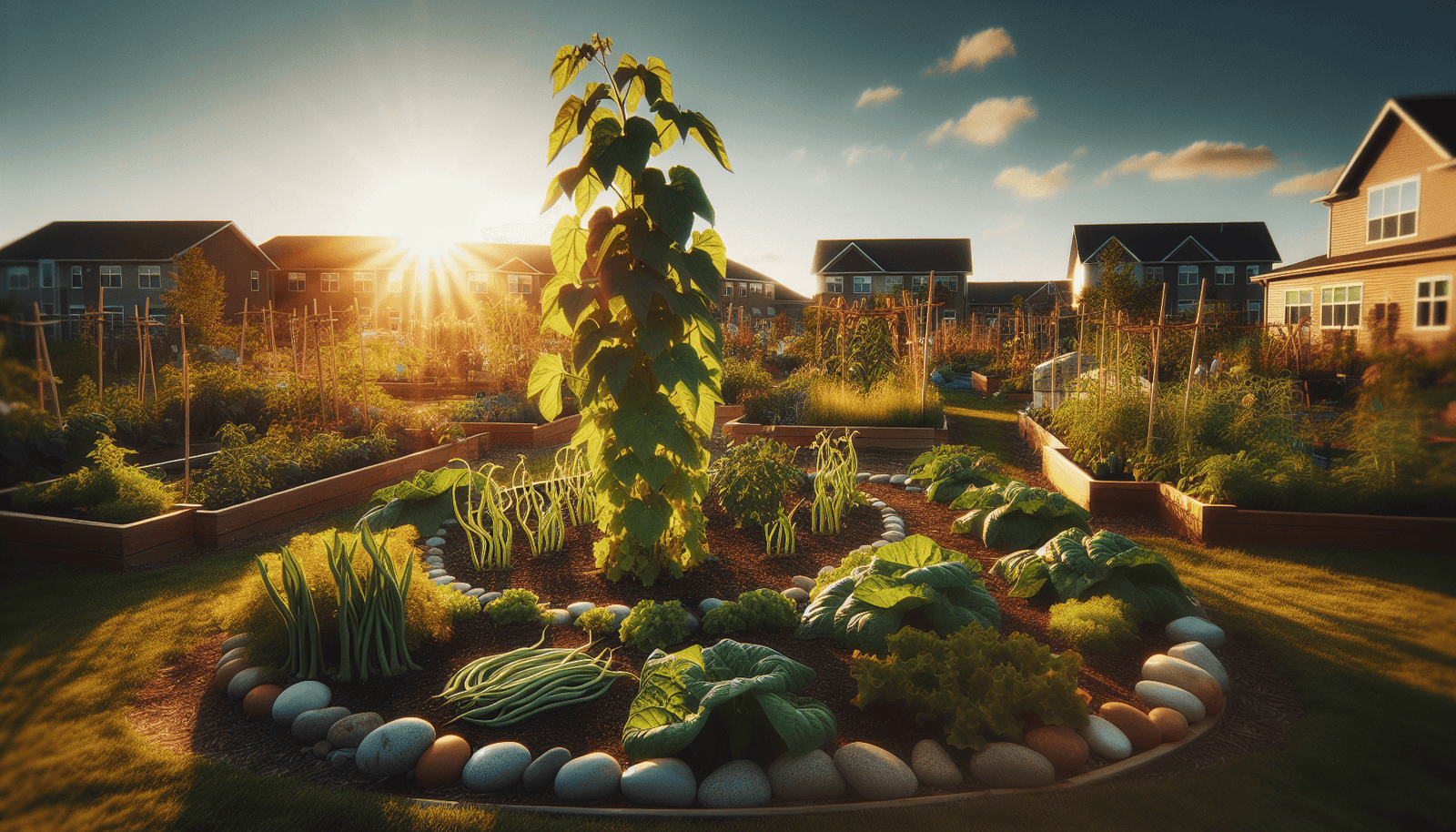Are you eager to create a thriving community garden but worried about potential pitfalls? Look no further! In this article, we explore the common reasons behind the failure of community gardens and provide valuable insights on how to ensure the success of your own. By examining the key factors that contribute to failure and offering actionable tips, we aim to empower you with the knowledge and tools needed to cultivate a flourishing and sustainable garden that brings people together. So, roll up your sleeves and let’s embark on a journey to turn your community garden into a triumph!

Reasons for Community Garden Failures
Lack of Planning and Organization
One of the main reasons for community garden failures is the lack of proper planning and organization. Without a clear roadmap, goals, and objectives, it becomes difficult to achieve success. Moreover, if there is insufficient planning at the initial stages, it can lead to various challenges and setbacks along the way. Additionally, the absence of a detailed site layout and design can make it hard to optimize space and resources efficiently. It is essential to establish a comprehensive plan that addresses the needs and interests of the community, sets clear goals, and incorporates a well-designed layout to maximize the garden’s potential.
Inadequate Community Involvement
Another significant factor contributing to community garden failures is the lack of sufficient community involvement. For a garden to thrive, it needs active participation and support from the community members. When there is a lack of interest and participation, the burden falls on a few dedicated individuals, leading to burnout and eventual failure. It is crucial to engage and include all key stakeholders, such as residents, local organizations, and schools, in the planning, decision-making, and maintenance processes. By fostering a sense of ownership and shared responsibility, community gardens can become vibrant and sustainable spaces.
Lack of Sustainable Funding
Community gardens often struggle due to the lack of sustainable funding. Relying solely on short-term grants or donations can create unstable financial situations that hinder the garden’s long-term success. It is crucial to develop a financial plan that diversifies funding sources and secures long-term commitments. Seeking partnerships with local businesses, applying for grants, and exploring creative fundraising strategies are effective ways to ensure the garden has the necessary resources to thrive.
Poor Site Selection
Another factor that can lead to community garden failures is poor site selection. Factors such as inadequate access to sunlight, unsuitable soil conditions, limited water availability, lack of proper drainage, and choosing an unsafe location can severely impact the garden’s productivity and overall success. It is essential to carefully assess potential sites and select one that provides optimal growing conditions for plants, easy accessibility for gardeners, and a safe environment for everyone involved.
Lack of Knowledge and Skills
A lack of gardening knowledge and skills can also contribute to community garden failures. Many individuals may have limited experience or understanding of gardening techniques, planting, pest and disease management, or soil nutrient management. This knowledge gap can result in poor plant growth, low yields, and frustration among gardeners. Providing education and skill development opportunities, such as workshops, training sessions, and mentorship programs, can empower community members with the necessary expertise and increase their chances of success.
Neglect and Lack of Maintenance
Neglecting a community garden and failing to provide regular maintenance can be disastrous for its long-term viability. Inconsistent care and attention, lack of regular weed control, improper irrigation and watering, inefficient soil nutrient management, and unaddressed infrastructure issues can lead to a decline in garden productivity and discourage community involvement. Establishing a maintenance schedule, involving volunteers, and ensuring the garden is well-taken care of are essential steps to ensure its ongoing success.
Ineffective Communication and Collaboration
Ineffective communication and collaboration can hinder the success of a community garden. when there is a lack of clear and open communication channels between gardeners, stakeholders, and community members, misunderstandings and conflicts can arise. This breakdown in communication can lead to inefficient decision-making, lack of coordination, and decreased community engagement. Cultivating a culture of effective communication, where information is shared regularly, and all voices are heard, is crucial for fostering collaboration and ensuring the garden’s success.
Lack of Supportive Policies and Regulations
The absence of supportive policies and regulations can also contribute to community garden failures. If there are no established guidelines or regulations to protect and support community gardens, they may face challenges in obtaining the necessary permits, securing resources, or addressing potential conflicts. Advocating for supportive policies and regulations at the local government level is essential to provide a framework that facilitates the establishment and maintenance of community gardens.
Lack of Long-Term Commitment
Without long-term commitment from community members and stakeholders, community gardens may struggle to sustain themselves. Some individuals may lose interest or move away, leading to a decline in participation and dedication. It is essential to foster long-term commitment by creating a sense of ownership, implementing successful engagement strategies, and recognizing and celebrating the contributions of gardeners and community members. Building a strong community around the garden can ensure its continued success for years to come.
Community Conflict and Internal Issues
Community conflict and internal issues can have a detrimental effect on the viability of a community garden. When disputes arise among gardeners or within the community, it can create a tense environment that hinders progress and cooperation. Establishing clear garden rules and protocols, promoting mediation and conflict resolution processes, encouraging respectful communication, and fostering inclusive decision-making are essential strategies for addressing and resolving community conflicts. By addressing these issues head-on, community gardens can maintain a harmonious and productive environment.

Strategies for Community Garden Success
Thorough Planning and Organization
Thorough planning and organization are key to the success of a community garden. This includes defining clear goals and objectives, developing a comprehensive plan, and creating a detailed site layout and design. By establishing a solid foundation at the beginning, the garden can operate efficiently and effectively, maximizing its potential for success.
Active Community Involvement
Active community involvement is crucial for the success of a community garden. This involves engaging and including all key stakeholders, such as residents, local organizations, and schools, in the planning, decision-making, and maintenance processes. By fostering a sense of ownership and shared responsibility, community gardens can thrive and become vibrant spaces that bring people together.
Securing Sustainable Funding
Securing sustainable funding is essential for the long-term success of a community garden. This involves diversifying funding sources and seeking partnerships with local businesses, applying for grants, and implementing creative fundraising strategies. By establishing a stable financial base, community gardens can ensure they have the necessary resources to thrive.
Effective Site Selection
Effective site selection is critical for the success of a community garden. This involves carefully assessing potential sites and selecting one that provides optimal growing conditions, easy accessibility for gardeners, and a safe environment. By choosing the right location, community gardens can maximize productivity and ensure a positive experience for all involved.
Providing Education and Skill Development
Providing education and skill development opportunities is essential to empower community members with the necessary knowledge and skills for successful gardening. Workshops, training sessions, and mentorship programs can teach gardening techniques, planting, pest and disease management, and soil nutrient management. By increasing knowledge and skills, community members can enhance their gardening experience and improve the productivity of the garden.
Regular Maintenance and Care
Regular maintenance and care are crucial for the ongoing success of a community garden. This involves establishing a maintenance schedule, involving volunteers, and ensuring the garden is well-taken care of. By providing consistent care and attention, community gardens can thrive and remain productive throughout the year.
Improving Communication and Collaboration
Improving communication and collaboration is vital for the success of a community garden. This includes establishing clear and open communication channels between gardeners, stakeholders, and community members. By fostering effective communication, community gardens can enhance decision-making, coordination, and community engagement.
Advocating for Supportive Policies and Regulations
Advocating for supportive policies and regulations at the local government level is essential for the success of community gardens. By establishing guidelines and regulations that protect and support community gardens, they can overcome potential challenges and ensure their ongoing viability.
Encouraging Long-Term Commitment
Encouraging long-term commitment from community members and stakeholders is crucial for the success of a community garden. This can be achieved by creating a sense of ownership, implementing successful engagement strategies, and recognizing and celebrating the contributions of gardeners and community members. By fostering long-term commitment, community gardens can thrive and continue to benefit the community for years to come.
Addressing Community Conflict and Internal Issues
Addressing community conflict and internal issues is essential for maintaining a harmonious and productive environment in a community garden. This involves establishing clear garden rules and protocols, promoting mediation and conflict resolution processes, encouraging respectful communication, and fostering inclusive decision-making. By addressing these issues head-on, community gardens can ensure a positive and supportive community atmosphere.


